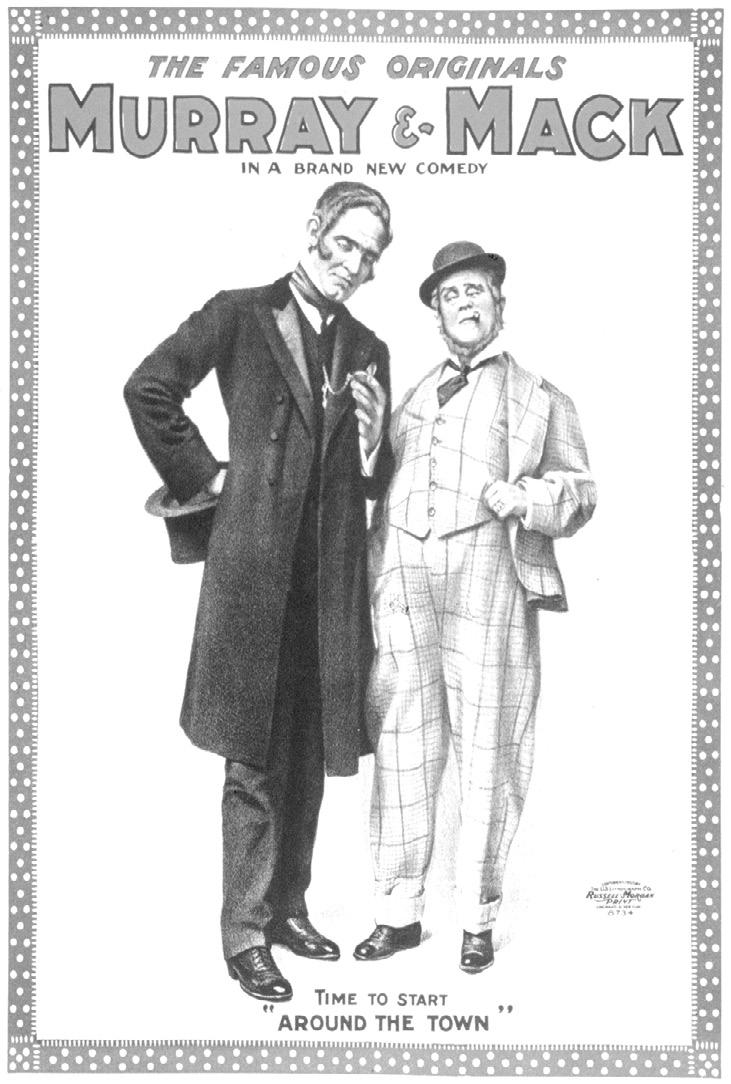
10 minute read
Library Mojo
Picking a Winner Kim is the Branch Lead of the Montecito Library. Questions or comments? Contact her: kcrail@santabarbaraca.gov
“W hat do you recommend? What should I read next?”
At the library, it is easy to see what’s new and in demand, hear rave reviews or scathing critiques. I feel like I’m in the know, surrounded by booklovers. With this lengthy library closure, I thought it might be useful to share some “from home” tricks to help find your next literary score.
Appealing or Appalling
If you want to get down to the nitty-gritty about this topic, check out Novelist’s “The Secret Language of Books: A Guide to Story Elements” found online. You can browse by style of character, pace, storyline, tone, and writing style – even create your own mix of preferences. They also have a wonderful section on genres. (Police procedural, anyone? Yes!)
Skim this and confidently use the Novelist database, which is accessible from the SBPL website with your library card.
You can also just search the library catalog for the last good book you enjoyed. If you go to the “More Information” button and scroll way down, you will find suggestions for other titles and authors to try. This can be a great tool for finding books for children and teens, too.
Good Old Word of Mouth
In a rare “out in the world” interaction (at the beach, from a shouting distance), a friend and I exchanged recommendations. Hers was The Giver of Stars by Jojo Moyes, which she said touched on serious issues while being a very enjoyable book about librarians. Mine was The Book Woman of Troublesome Creek by Kim Michele Richardson about a blue-skinned, yes, blue-skinned, packhorse librarian in Kentucky.
As it turns out, the books had both been released in 2019 and were embroiled in a juicy controversy over plagiarism. There’s a waitlist for The Giver of Stars so if you are interested in reading it (right now!) like I am, give Tecolote Book Shop a call at (805) 969-4977.
Reading for Wellness
We all know that exercise, fresh air, healthy food, water, and keeping in touch with loved ones can make quarantine life more manageable. I would argue that having some nice books to escape into is more attainable for some of us. Books are also a needed reprieve from screens and social media. They

relieve stress and can transport you to a time before the quarantine or ahead to a hopeful future.
Whatever you are reading, watching, or listening to, I hope that you are getting what you want these days. Whether it’s for entertainment, education, comfort, or relaxation, please reach out if you need anything.
All public libraries remain closed, but the Central Library has staff in the building to answer questions and fulfill requests for book delivery by mail. Staff is available Monday through Thursday 9-6 and Friday 9-5:30 at (805) 962-7653.
I’m still helping at the Public Health Department in Epidemiology, but I am checking work emails and would love to hear how you’re doing.
Be well, Library Friends. You are important and dearly missed! •MJ My kids, missing school and the library, but making the best of it

WAY IT WAS (Continued from page 23) for almost three more years, dying down to ashes and then banked again into a small flame. Then on January 25, 1906, the newspaper headline exclaimed “MODERN OPERA HOUSE FOR SANTA BARBARA WILL BE ERECTED SOON – Property Has Been Purchased and Work Will be in Progress in the Very Near Future – Milo M. Potter is Interested.” Breaking Ground
The new theater would stand on the southwest corner of State and Montecito streets. John Lagomarsino, pioneer Ventura resident, farmer, banker, and owner of the Lagomarsino Theatre in Ventura, spearheaded the project along with four other investors. Lagomarsino had business interests in liquor and wine distribution in Santa Barbara. S.L. Shaw of Ventura, who had designed and built Lagomarsino’s theater, was given the contract for the new opera house. He based his design on the 1904 Belasco Theatre in Los Angeles.
Now that things were really moving, Contractor Augustin L. Pendola broke ground on February 23. Peter Poole was hired to do the stone foundation work from which would arise a three-story brick building fronting on State Street. Much of the work would be executed by, and the materials supplied by, local businesses. The 10,000 bricks needed per day, for instance, were manufactured at the Coleman brickyard on Milpas Street.
Each of the upstairs floors contained eight large rooms with baths for lodging which were leased to a hotelier to manage. On one side of the entry, a grocer set up business, and on the other, a saloonkeeper established a bar. H.A. Rogers, manager of the Santa Barbara Opera House (Lobero), leased the new theater for three years and endeavored to manage them both.
As the new theater approached completion, the plan for the proposed drop curtain ignited an inferno of protest. The curtain was to have advertising on it! Many Santa Barbara theater lovers believed that a model, up-todate theater should not be cheapened by advertisements. Members of the Women’s Club took up the matter, and Mrs. Christian (Mary Miles) Herter, whose home later became the exclusive El Mirasol Hotel, gathered signatures for a petition pledging non-support of any business that advertised on it.
The names on the petition read like a list of Who’s Who in Santa Barbara The Potter Theatre was not rebuilt after the 1925 earthquake, but a comparison of this photo with that of the
Belasco shows its simpler but similar design. One odd difference was the lack of symmetry between the left and right sides of the building. (Courtesy Santa Barbara Historical Museum.)

society of the day. A few names, which may still be recognizable today, were Gould, Hazard, Fernald, Stow, Spaulding, Eaton (Arts and Crafts artisan) and, with Franceschi, Southern California Acclimatizing Association, Doulton (Miramar), Hollister, and Oliver (Rocky Nook Park). The Morning Press published 78 names and said there were “many others.” It was to no avail, however, for after much discussion the Potter
J ARROTT & CO.
REAL E S T A T E INV E S T MENT S
SPECIALIZING IN 1031 TAX-DEFERRED EXCHANGES
AND
TRIPLE NET L EASED INVESTMENT PROPERTIES WITH NATIONAL TENANTS MANAGEMENT FREE

directors decided to go ahead with their original plan.
Construction delays, and perhaps the protests, had pushed the official opening to January 29, 1907, but when that first audience filed in they found a thoroughly modern theater where comfort and safety and convenience were paramount. Between the main floor with six loges and four stage boxes and the upstairs balcony and gallery, the theater seated 1,175 people. Many of the seats were upholstered and there was a comfortable waiting room for the ladies. Many emergency exits and a fire resistant asbestos curtain, donated by Milo Potter in exchange for naming the theater after his hotel, insured safety.
One of the most striking features was the proscenium arch that framed the stage. It included ornamental staff work and real paintings, statues, and studies in bas-relief.
Finally, the Potter Opens
For its gala opening, the Potter presented the musical comedy The Umpire, featuring the same cast that had played over 350 wildly successful nights in Chicago, where its catchy music and “the most agile and graceful group of little dancing beauties that ever did a jig-step,” had entranced Windy City audiences for nearly a year. With book and lyrics by Will M. Hough and Frank R. Adams and music by Joseph E. Howard, the rather zany plot centered on an umpire whose egregious baseball call brought down such venomous threats that he
Laboratory Manager Carole Rollins tests wastewater, confirming it is fully disinfected to kill pathogens and viruse Since 1962, the Montecito Sanitary District has been safely col Montecito’s wastewater. The District’s certified laboratory an local environment by continuous monitoring using the latest tes District’s well‐maintained facilities and award winning staff s day, 7 days a week. If you have any questions call General Man St. Anthony’s College, and “legitimate theater” was represented by Shakespeare’s The Taming of the Shrew. That month, the stage was lit for 15 out of 28 days.
Faced with this abundance of competition, the old Santa Barbara Opera House (Lobero) soon fell into decline and after several years was rarely used. Ultimately, it would arise phoenix-like from the ashes in 1924, while the Potter would succumb to the Earthquake of 1925. Though brief, the Potter years were not without import and influence on the future of music and drama in Santa Barbara.
was forced to flee to Morocco. By officiating an all girls’ football game there, he finds redemption and love. Throw in eight new songs, including “How’d You Like to be an Umpire,” lots of dancing, and a real football game between the girls, and the play was a smash hit.
Though the paper enthused about the christening of the “finest theater” in the West and the entrepreneurial energy that had made it a reality, they also admitted the audience was not so large as it could have been. They blamed the weather, but only two of the 78 prominent citizens who signed the petition against the advertising curtain attended. They were Louis Stott and his wife, Ethel, who was “strikingly gowned in a crush strawberry creation.”
Murray and Mack were old friends to the Santa Barbara stage and on February 12 played at the new theater in town. Their musical comedy company boasted 40 people, mostly girls. (Library of Congress)

Never-the-less, the Potter was suitably launched and quickly became the theater of choice, offering a steady stream of entertainments each month. During that first February, its lights were rarely out, as it brought such varied acts as McIntyre and Heath’s vaudeville company, for whom W.C. Fields was a principal member. Community theater was represented by the annual production of
Next time: Glory Days at the Potter (Sources: contemporary newspaper articles; 1907 and 1913 Theater Guides; ancestry.com sources; losanglelestheatres.blogspot.com by Bill Counter; biographical information from various internet sources; Plie Ball! Baseball Meets Music and Dance on Stage and Screen by Jeffrey M. Katz, pp 40-41; California: A History by Andrew F. Rolle.) •MJ
PUBLIC NOTICE NOTICE OF AVAILABILITY AND NOTICE OF INTENT TO ADOPT A MITIGATED NEGATIVE DECLARATION – PURSUANT TO CALIFORNIA ENVIRONMENTAL QUALITY ACT GUIDELINES SECTION 15072

NOTICE IS HEREBY GIVEN:
The Montecito Sanitary District is proposing to design, construct, and implement the proposed Development Plan Projects. The Development Plan Projects consist of the construction, operations, and maintenance of: (1) a recycled wastewater treatment system; (2) essential services building and parking lot; and (3) five solar structures with panels. In coordination with the Montecito Water District, the recycled water produced from the recycled wastewater treatment system would be used to irrigate the adjacent existing Santa Barbara Cemetery. The use of recycled water for the irrigation of the cemetery will allow the cemetery to cease use of potable water for irrigation purposes. All project components would be located either within or adjacent to the existing Montecito Sanitary District facility in the unincorporated community of Montecito, at 1042 Monte Cristo Lane.
As the CEQA Lead Agency for the proposed Development Plan Projects, the Montecito Sanitary District has conducted an Initial Study of the potential effects of the proposed projects, and determined, in light of the whole record, the proposed projects would not result in a significant impact on the environment. MSD has determined the following issue areas would require mitigation measures to reduce potential impacts to a less-than-significant level. As previously noticed on the District website, the 30-day period for public review and comment on the proposed Mitigated Negative Declaration began on May 5, 2020. All comments must be submitted by June 5, 2020. Please address comments on the proposed Mitigated Negative Declaration as follows: •Biological Resources •Cultural Resources •Transportation •Tribal Cultural Resources •Utilities and Service Systems
WENDY GRAGG 805. 453. 3371
Development Plan Projects Attn: Carrie Poytress, P.E., Engineering Manager Montecito Sanitary District 1042 Monte Cristo Lane, Santa Barbara, CA 93108

